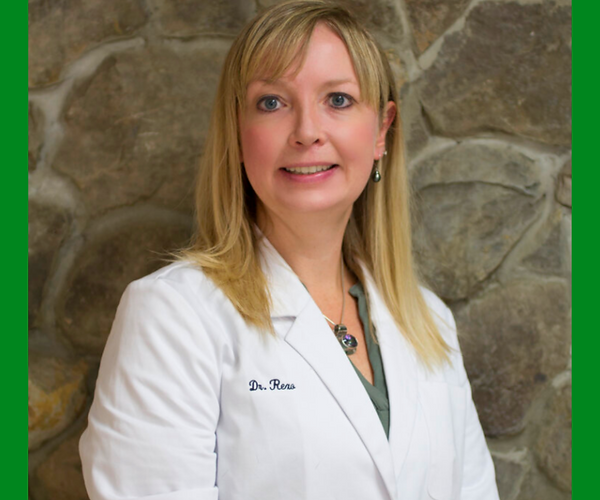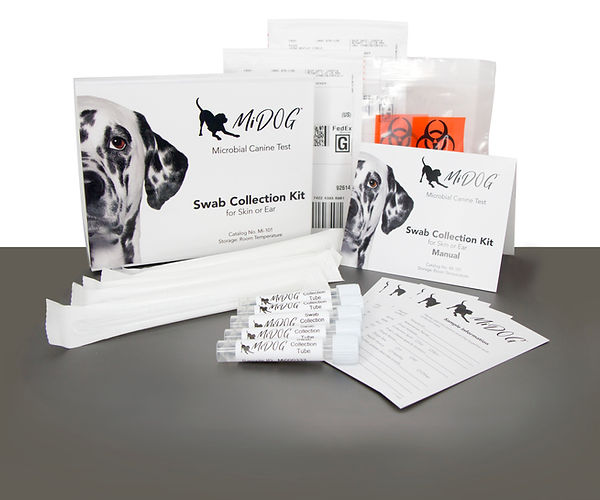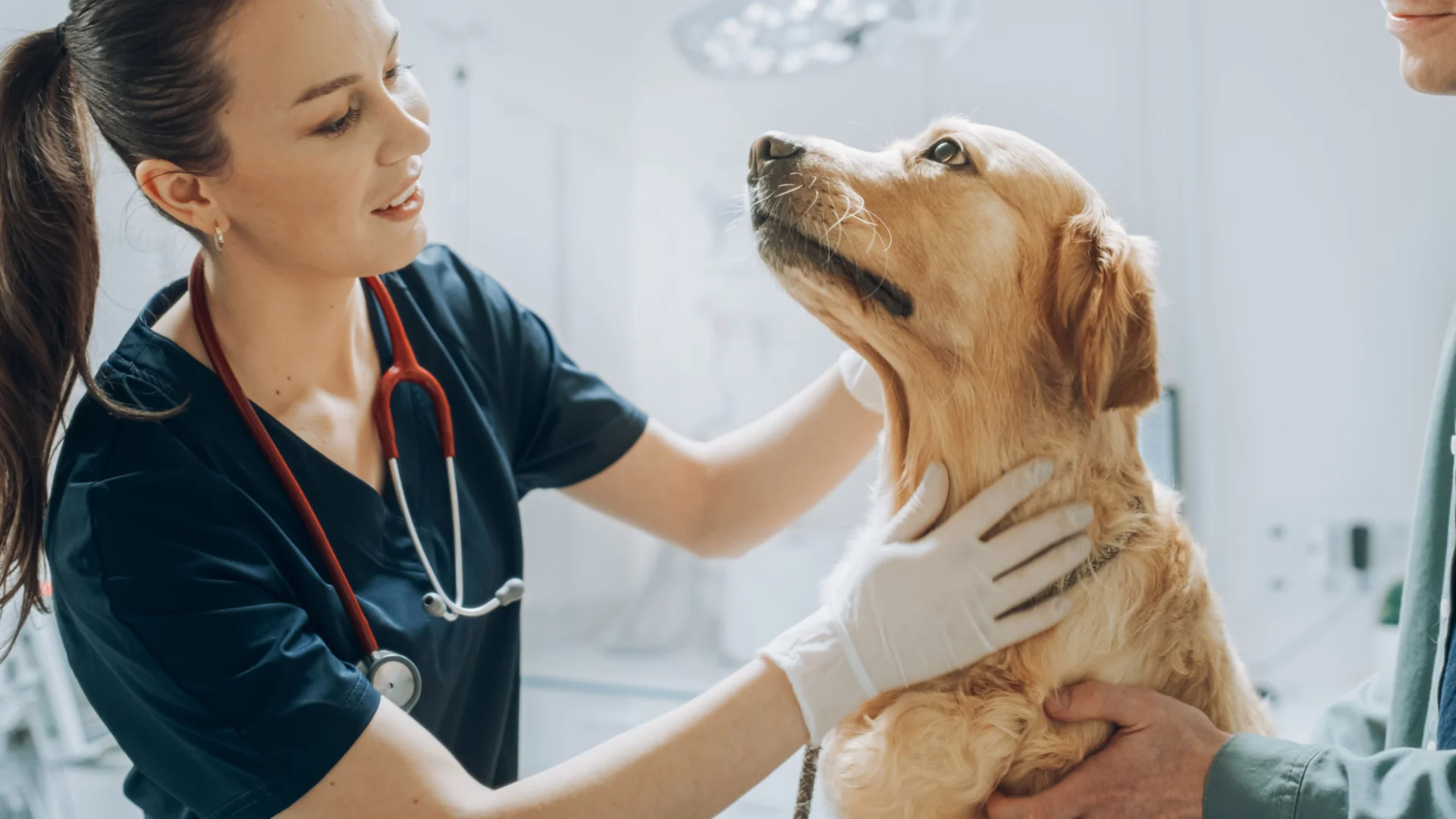
Antibiotic resistance is an increasing global problem, both for public and animal health and welfare. Considering antibiotic resistance is influenced not only by human and animal antibiotic use, but also by intrinsic resistance exhibited by some pathogenic microorganisms, understanding the clinical implications of animal skin microbiomes is becoming increasingly important. With contemporary research employing the use of Next-Gen Sequencing to aptly characterize the skin microbiome of various animals, veterinary medicine is experiencing a rapid transformation in a clinical diagnostic capacity.
With us today we have Dr. Alissa Rexo, a veterinarian that specializes in dermatology. Dr. Rexo earned her doctorate of veterinary medicine from Atlantic Veterinary College at the University of Prince Edward Island, Canada. In addition to her dermatologic work, she has spent time as a chief medical officer for a start-up animal health company focused on enzyme-based dental and dermatology products. Dr. Rexo is also a certified veterinary acupuncturist through the International Veterinary Acupuncture Society.
The purpose of this interview is to inform clinicians and pet-owners about important dermatologic issues to consider when determining diagnostic and treatment options.
And so without further ado, meet Dr. Rexo!

Dr. Rexo partnered with the scientists at MiDOG to treat canine skin more efficiently
Alternatively, listen to the interview here.
Q: Would you mind introducing yourself and telling us why you became a veterinarian?
Absolutely. I’m a veterinarian that specializes in dermatology and I reside in Virginia. I’ve been practicing for close to 15 years and grew up in New Hampshire on a small hobby farm where I was surrounded by animals through most of my childhood. I also participated in the local 4-H club and becoming a veterinarian was just a lifelong dream.
Q: And why did you choose to specialize in dermatology specifically?
So during the time I was in general practice, I had the opportunity to treat a variety of animals including horses, goats, miniature pigs, dogs, cats, and rabbits.
What I was finding was about 70% of the patients I was seeing were being treated for illnesses related to ears, skin, or allergies, and a fairly large percentage of those cases I was referring to the dermatologist for further diagnostic testing.
So during that time, I really developed an interest in following those cases further and a big part of that was dermatology.
Q: What fascinates you most about your work?
Immunology is a really central part of what we do in dermatology, and it’s really fascinating and evolving continuously. There’s been so much that we’ve learned over the past decade as biotech has continued to advance. So we have a lot of different opportunities and treatments in dermatology through immunology advancements.
Q: How many patients do you treat on a normal day?
On average I usually treat about 10 to 15 patients. It makes a difference if we’re seeing new patients versus recheck exams since the new patients take a lot more time because they often have a lot more of a complex history that we have to read through and discuss with the owner.
Q: Do you have any patients that were particularly interesting or have stuck with you over time?
I think the probably most rewarding ones are the ones that come in with the most complicated medical histories. I know I had this Chihuahua patient a couple of years ago that had a history of a lung tumor resection, and he was being managed by a cardiologist for primary hypertension. During that time, he developed an autoimmune condition called pemphigus foliaceus, and he required numerous immunosuppressive treatments. He had developed such severe crusting on his paws that he was having difficulty walking, so we were able to control his oral and his topical medications. We really gave him a good quality of life during the last year he had with his family.
Q: In the context of animal health, is there anything that you’re worried about right now?
Right now we’re seeing so much multi-drug resistance developing in our patients, and these superbugs have started to emerge. It’s become a big problem over the past decade. And it’s putting not only our clients at risk if they’re immune-compromised, but it also makes our job extremely challenging as veterinary dermatologists.
Q: Do you have a favorite microbiome or my favorite microbe?
Pseudomonas aeruginosa would probably be my favorite microbe. I say that because it’s also my nemesis when I see it with my patients; it’s a negative bacillus bacterial organism and it’s just a really common cause of chronic otitis and ear infections in dogs. Occasionally, we do see it in cats.
Pseudomonas aeruginosa is a really challenging bacteria to treat because it forms a biofilm. That’s what leads to these chronic middle ear infections and patients. Biofilm is the slimy buildup of bacteria, and it protects these microbes from antibiotics and ear cleaners that we prescribe.
So it’s really important that we’re able to identify bacteria like Pseudomonas so that we can prescribe the appropriate treatment.
Q: When a new patient comes in, how do you typically proceed to help them understand what is going on with the microbiome?
In an initial meeting with a patient, we really take a thorough history. We ask owners about the diet, and we also want to know if an animal is itchy. We ask the owners to rate an itch level one through ten, so we have an idea of the severity. And we want to know if it’s a seasonal or a continuous problem, as well as if other humans or humans in the household are affected. We also want to know if there are any skin lesions that are present on humans or pets in the households.
Then we kind of move on to performing a really comprehensive dermatologic exam. We take photographs to document the lesions so we have comparison photos we can go back to as we perform rechecks on the patients.
Q: For the dermatologic exam, what kind of diagnostic tools do you use? For example, culture we know is already 150-180 years old by now. Do you think there’s any room for improvement?
When we first see a patient, we definitely still perform skin cytology, just for an initial assessment to take a look at infection beneath the microscope and determine if it’s bacterial or fungal in origin. And we also perform a test called a skin scrape or a trichogram. That involves just gently squeezing the skin or plucking several hairs from a patient to examine under the microscope for skin mites or possible fungal organisms called dermatophytes. We look at the pattern of the hair breakage, and that gives us an indication if it’s a self-inflicted trauma that the pet has caused to themselves, or if there’s an active infection of the hair follicles. And then we still do perform some skin culture testing. But again, the value can be somewhat limited. The fungal cultures, we even run in-house sometimes in a test called a DTM culture.
The problem that we have with culture is that not all organisms will grow. It can be difficult for certain bacteria in fungal organisms to get them to grow appropriately, it can require special conditions and extended periods of time. So the results are not always accurate. Additionally, it also doesn’t give us a comprehensive picture of the overall microbiota, because there can be variability in the culturing of different bacteria. It can take up to several weeks for some of these fungal organisms to grow appropriately, and sometimes they just don’t grow at all.
Q: One way to investigate all those microbes is by investigating the microbiome using DNA evidence, and that’s actually how we met too. What inspired you to do the microbiome research on dog skin?
I’ve had a really strong interest in holistic medicine for over a decade. I’m actually a certified veterinary acupuncturist and I did a year-long training program for my certification that I completed in 2008. So I started treating a lot of my patients after that time with probiotics and I utilize fecal transplantation. And what I was seeing was a really positive response in improved digestion for the dogs that I was treating with these therapies.
I had a personal dog, a Great Dane, who had several orthopedic and cancer issues. And she really taught me a lot about integrative medicine as well as providing senior care to a pet. I was fortunate that she lived for 10 and a half years. That was significantly longer than what her prognosis was based on her medical conditions, and she was just a really special dog to me that taught me a lot about incorporating integrative medicine into the treatment for my patients. It’s so wonderful to have a pet like that.
Q: What did you learn from the microbiome? Did this change how you approach new cases, now that you have conducted your own study and you’ve learned so much more about it?
The study that I conducted looked at the skin microbiome in French bulldogs specifically, but what it showed us was that topical therapy in dogs may improve microbial diversity, and this was a really exciting finding. I’m definitely finding myself prescribing more topical therapy in my patients not only to treat infection but also to maintain a healthy skin barrier.
Read the study here.
Q: That’s a great finding that may help antibiotic stewardship by reducing the usage of unneeded antibiotics. Which bacteria do you pay special attention to when you evaluate your patients?
The main bacteria that may be pathogenic on the skin of dogs is Staphylococcus pseudintermedius. We tend to see some normal resident bacteria in canine skin as well, including coagulase-negative staphylococcus, streptococcus, Micrococcus, and Acetobacter. Dogs can develop multi-drug resistance, and specifically methicillin-resistant staphylococcus infections. These infections are similar to MRSA (that’s discussed in human medicine, but they’re not identical).
Dogs frequently developed subspecies. Unfortunately, what we’ve seen is that human healthcare workers can actually transmit multi-drug resistant staph infections to their pets, so it’s really important that we’re able to identify these antibiotic resistant organisms early so that we can eliminate them from our households.
Q: Can you tell us more specifically, how improved knowledge of the canine microbiome can treat skin conditions and diseases?
If we’re able to identify what the normal composition of a canine skin microbiome should be in a dog, then we can really better identify what’s abnormal with a patient with a disease, or what we call dysbiosis. I think it’s really valuable for us to understand the distribution of what normal microbiota should be at different specific body site locations because then we’re able to implement the appropriate topical therapies so that we can support a healthy microbiome and these patients.
Q: We’re learning more and more what a healthy microbiome looks like. And so in your opinion, do you think canine medicine could benefit from microbiome research?
We’re seeing a lot of the studies that are being done that show that there’s a big difference between the bacterial diversity in the skin of healthy versus allergic dogs. And we’ve seen that there’s a close connection between the canine gut as well as the skin microbiome. We’ve seen that the microbiome actually influences a dog’s metabolism, as well as their immunologic activity. If they have a dispatch imbalance, they can actually develop gastrointestinal disease or other infections. So I think it’s really important that we’re able to support dysbiosis through appropriate probiotics or diet changes, as well as topical therapy.
When most people think about the microbiome, bacteria come to mind first, and most studies actually exclusively look at bacteria, but sometimes we tend to forget that fungi are all around us at all times as well. We don’t actually know very much about all the fungi that surround us and our animals. We’re just beginning to learn more about them because we’re now studying the DNA evidence rather than trying to grow them in the lab since it sometimes takes weeks to grow. That’s why we just don’t know as much about them because sometimes we simply don’t have the time to wait around several weeks.
Q: Now that we know more about the role of fungi in canine health, what can you tell us about those fungi? Have they been on your radar for a long time or do you pay more attention now?
I think we’ve recognized that there’s some fungal diversity, not only on the skin but also in the gut and in the mouth, and on mucosal surfaces. There have definitely been studies looking at the bacterial microbiota. Some recent studies have looked at the fungal microbiota in an altered disease state in patients.
What we see in our patients as a dominant fungal skin organism is Malassezia. It can really overgrow the skin of dogs, particularly in allergic patients that have a compromised skin barrier and an altered skin pH. What we’ve seen is that if we can properly control Malassezia with topical therapy, we can stabilize the skin barrier as well as control the skin pH, and we can improve the overall health of the skin and improve the symptoms that are present in our allergic patients.
It definitely makes a difference if we can control those fungal organisms.
Q: When you can control skin health, does that reflect on the overall health of the pet?
I think it improves their quality of life. What we see with our pets and our allergic patients that we treat is they become stressed and they itch, and then the itch leads to anxiety and more stress. It’s just this continuous cycle of itching, internal cortisol levels increase and cause anxiety in some of our patients.
I think if we can control the infection that results as a secondary consequence from them itching, we can give them a better quality of life.

Find out if your vet uses MiDOG before you book your next appointment!
For health-related questions about the dermatologic status of your pet, reach out to a veterinarian that specializes in dermatology.
Categories: Antibiotic Resistance, Next-Gen DNA Sequencing Technology, Veterinarian Guides, Veterinary Best Practices, Veterinary Dermatology

